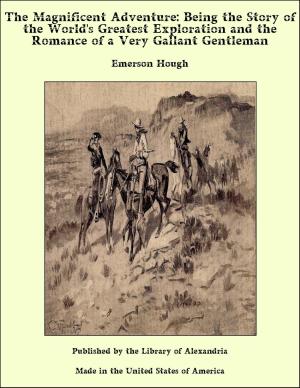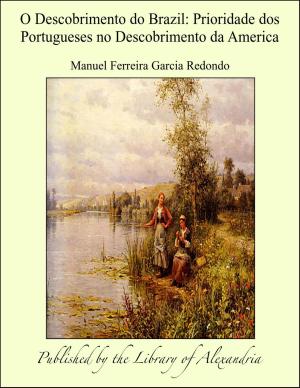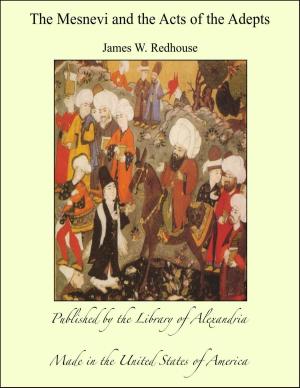My Country, 'tis of thee! The United States of America: Past, Present and Future
Nonfiction, Religion & Spirituality, New Age, History, Fiction & Literature| Author: | Willis Fletcher Johnson | ISBN: | 9781465613400 |
| Publisher: | Library of Alexandria | Publication: | March 8, 2015 |
| Imprint: | Language: | English |
| Author: | Willis Fletcher Johnson |
| ISBN: | 9781465613400 |
| Publisher: | Library of Alexandria |
| Publication: | March 8, 2015 |
| Imprint: | |
| Language: | English |
BEGINNING with the year 1492, the date of the first voyage of Columbus, necessarily leaves a great part of American history untold. Every nation’s story begins in the middle; back of Leonidas are the Homeric heroes; Romulus and Remus antedate the Tarquins. So, centuries before the clear glory of Columbus, we have tradition of various shadowy explorers whose strange barques visited our shores. Unless we grant the earliest inhabitants of America an autochthonic origin, it seems most reasonable to suppose that they came from Asia. Such authorities as Humboldt, Bancroft, and Prescott declare it their opinion that the monuments, the systems of cosmogony, the methods of computing time, etc., all point to an ancient communication with eastern Asia. It is certain that from time immemorial constant intercourse has been kept up between the natives of either side of Bering’s Strait, and it is very probable that the original immigrants came that way. There are other possible routes—the Aleutian Islands and Polynesia are the two next favored by the authorities. There is a distinct trace of Japanese blood in many of the native tribes of the northwest coast, and we have too many modern instances of Japanese junks drifting upon the American coast, after floating for months at the mercy of the Pacific currents, to doubt the possibility of prehistoric visits of these people. What is known as the “black stream,” or Japan current, runs northward past the eastern coast of the Japanese Islands, then curves to the east and south, passing the west coast of America and moving toward the Sandwich Islands. This current, it is said, would carry a drifting vessel toward the American coast at the rate of ten miles a day. The theory which supposes the people, or at least the civilization, of America to be of Egyptian origin is based upon analogies existing between the architecture, hieroglyphics, and various customs of the two countries. But even where these analogies bear the test of close examination, they can scarcely be said to prove anything. In western Asia the Phœnicians—those bold voyagers—and their children, the Carthagenians, are given the honor of settling America. The records of their travels show that they knew of a country lying far to the west. In the writings of Diodorus Siculus is an elaborate account of a wonderful island in the Atlantic Ocean, far beyond the Pillars of Hercules, and many days’ journey from the coast of Africa. This happy land, fertile of soil, beautiful of scenery, and perfect of climate, was accidentally discovered by Phœnician sailors, whose barque was driven thither by contrary winds. On their return they gave such glowing accounts of the new country that large colonies of Tyrians left their native land to settle there. This may have been America, but is more likely to have been the Canary Islands.
BEGINNING with the year 1492, the date of the first voyage of Columbus, necessarily leaves a great part of American history untold. Every nation’s story begins in the middle; back of Leonidas are the Homeric heroes; Romulus and Remus antedate the Tarquins. So, centuries before the clear glory of Columbus, we have tradition of various shadowy explorers whose strange barques visited our shores. Unless we grant the earliest inhabitants of America an autochthonic origin, it seems most reasonable to suppose that they came from Asia. Such authorities as Humboldt, Bancroft, and Prescott declare it their opinion that the monuments, the systems of cosmogony, the methods of computing time, etc., all point to an ancient communication with eastern Asia. It is certain that from time immemorial constant intercourse has been kept up between the natives of either side of Bering’s Strait, and it is very probable that the original immigrants came that way. There are other possible routes—the Aleutian Islands and Polynesia are the two next favored by the authorities. There is a distinct trace of Japanese blood in many of the native tribes of the northwest coast, and we have too many modern instances of Japanese junks drifting upon the American coast, after floating for months at the mercy of the Pacific currents, to doubt the possibility of prehistoric visits of these people. What is known as the “black stream,” or Japan current, runs northward past the eastern coast of the Japanese Islands, then curves to the east and south, passing the west coast of America and moving toward the Sandwich Islands. This current, it is said, would carry a drifting vessel toward the American coast at the rate of ten miles a day. The theory which supposes the people, or at least the civilization, of America to be of Egyptian origin is based upon analogies existing between the architecture, hieroglyphics, and various customs of the two countries. But even where these analogies bear the test of close examination, they can scarcely be said to prove anything. In western Asia the Phœnicians—those bold voyagers—and their children, the Carthagenians, are given the honor of settling America. The records of their travels show that they knew of a country lying far to the west. In the writings of Diodorus Siculus is an elaborate account of a wonderful island in the Atlantic Ocean, far beyond the Pillars of Hercules, and many days’ journey from the coast of Africa. This happy land, fertile of soil, beautiful of scenery, and perfect of climate, was accidentally discovered by Phœnician sailors, whose barque was driven thither by contrary winds. On their return they gave such glowing accounts of the new country that large colonies of Tyrians left their native land to settle there. This may have been America, but is more likely to have been the Canary Islands.















